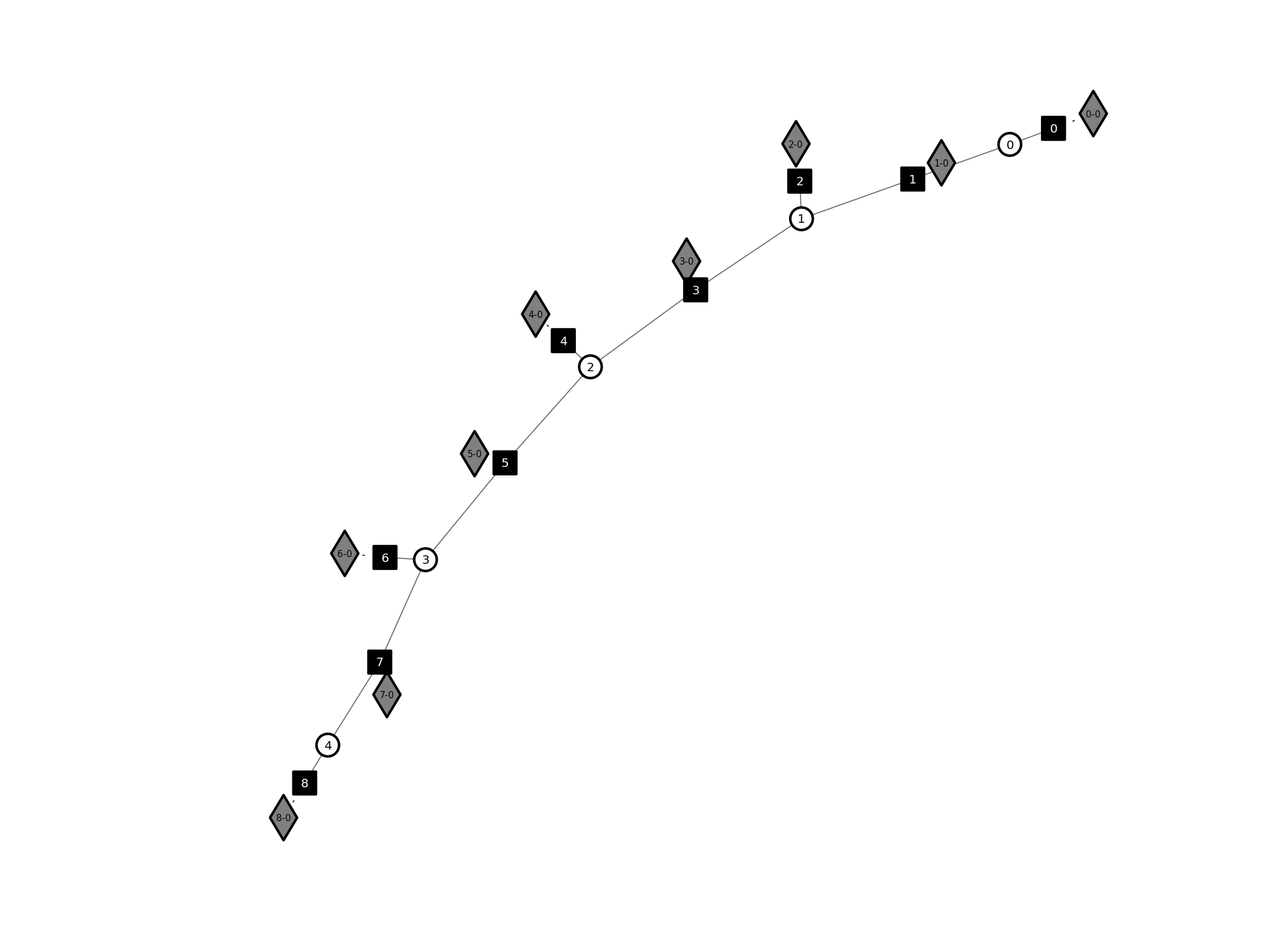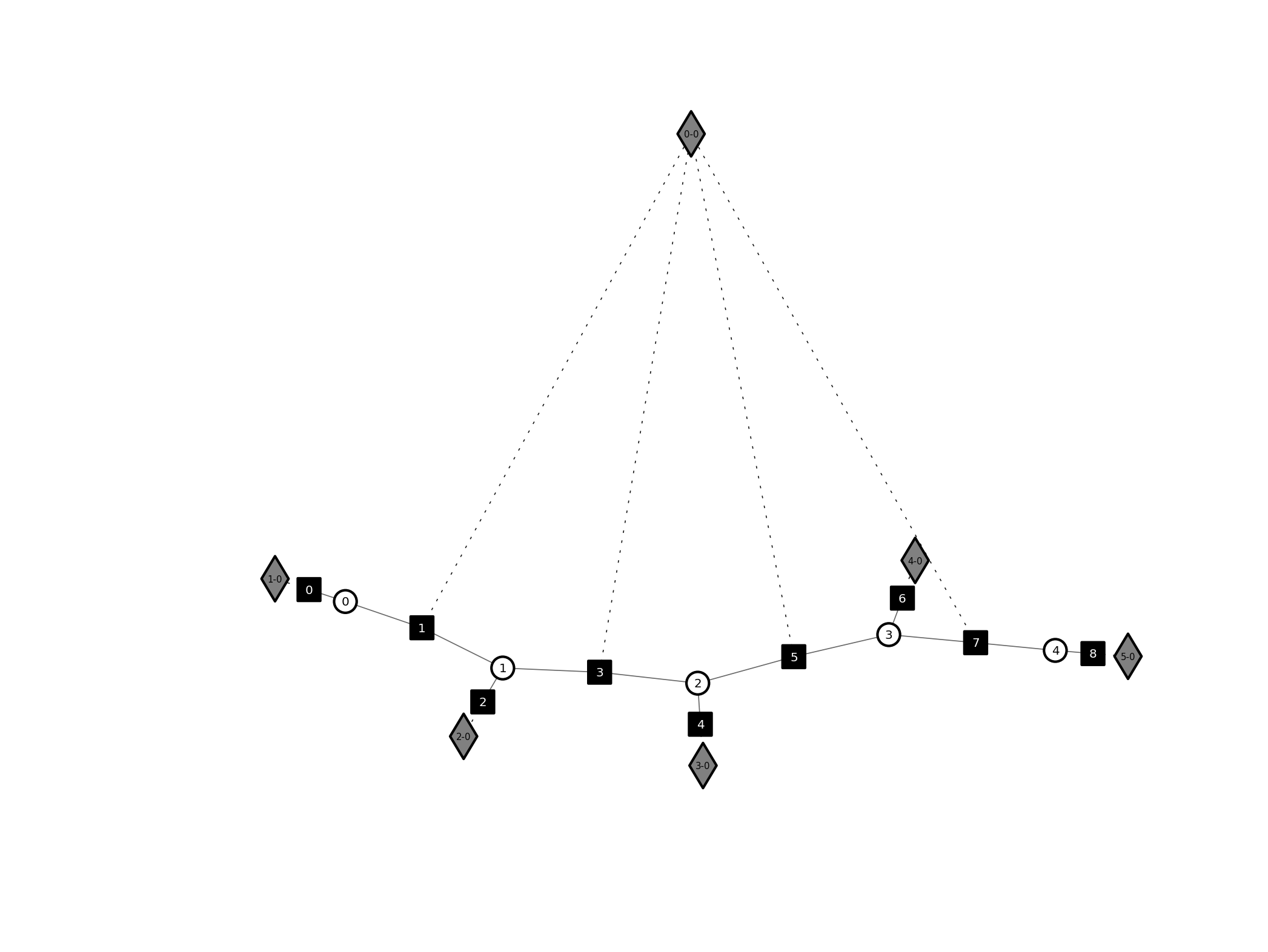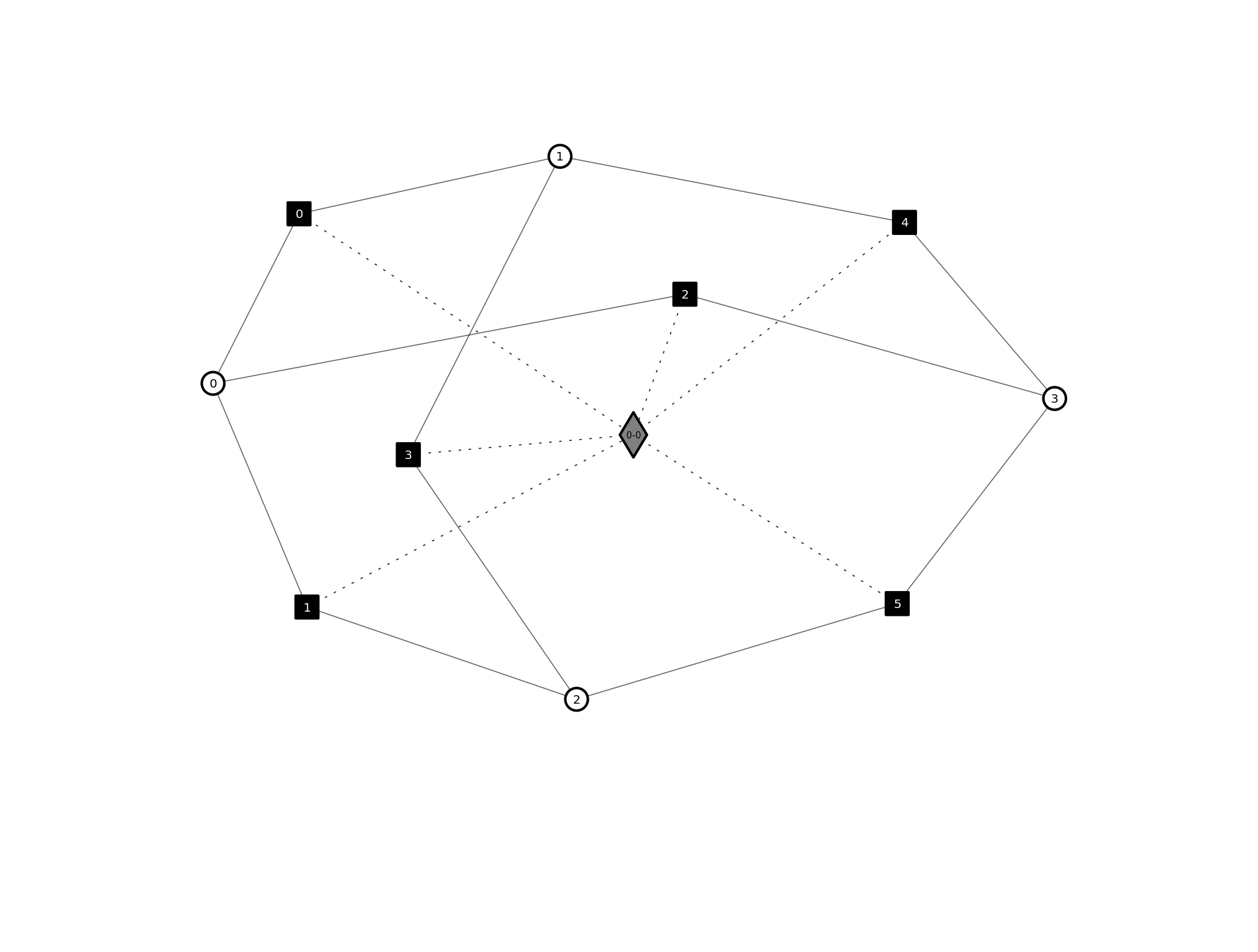Construct a Graphical Model¶
A graphical model (gm) is always constructed from a sequence containing the number of labels for all the variables. The number of variables is given by the length of the sequence.
A gm can be constructed from a list in the following way:
numberOfLabels=[2,2,2,2,2]
gm=opengm.graphicalModel(numberOfLabels)
The result is a gm with 5 variables. All of them have two labels / states. The operator of the gm is an Adder (+). The operator can also be specified. The following lines will construct two graphical models, one with an Adder(+) as operator, and one with a Multiplier(*) as operator. This time a numpy.ndarray is used as number of labels sequence:
numberOfLabels=numpy.array([4,4,4] ,dtype=numpy.uint64)
gm1=opengm.graphicalModel(numberOfLabels,operator='adder')
gm2=opengm.graphicalModel(numberOfLabels,operator='multiplier')
The result will be two graphical models, each with 3 variables where each variable has four states. The operator of gm1 is an Adder(+), the operator of gm2 is an Multiplier (*)
Add Factors and Functions to a Graphical Model¶
Note
Variable Indices must always be sorted!
Add Functions to a Graphical Model¶
import opengm
import numpy
gm=opengm.gm([2,2,3,3,4,4,4],operator='adder')
functionIds=[]
#---------------------------------------------------------------
# Numpy Ndarray
# (is stored in a different multi array function within opengm)
#---------------------------------------------------------------
f=numpy.random.rand(2,2,3,4)
fid=gm.addFunction(f)
gm.addFactor(fid,[0,1,2,4])
print "\nexplicit function: \n",f
#---------------------------------------------------------------
# Sparse Function
#---------------------------------------------------------------
# fill sparse function "by hand"
f=opengm.SparseFunction(shape=[3,4,4],defaultValue=1)
# fill diagonale with zeros
for d in xrange(4):
f[[d,d,d]]=0
print "\nsparse function: \n",f
fid=gm.addFunction(f)
functionIds.append(fid)
gm.addFactor(fid,[3,4,5])
# fill sparse function from dense function
f=opengm.SparseFunction()
f.assignDense(numpy.identity(4),defaultValue=0)
fid=gm.addFunction(f)
functionIds.append(fid)
gm.addFactor(fid,[4,5])
print "\nsparse function: \n",f
#---------------------------------------------------------------
# Potts Function
#---------------------------------------------------------------
f=opengm.PottsFunction(shape=[2,4],valueEqual=0.0,valueNotEqual=1.0)
fid=gm.addFunction(f)
functionIds.append(fid)
gm.addFactor(fid,[0,5])
print "\npotts function: \n",f
#---------------------------------------------------------------
# Truncated Absolute Difference Function
#---------------------------------------------------------------
f=opengm.TruncatedAbsoluteDifferenceFunction(shape=[3,4],truncate=2,weight=0.2,)
fid=gm.addFunction(f)
functionIds.append(fid)
gm.addFactor(fid,[2,5])
print "\ntruncated absolute difference function: \n",f
#---------------------------------------------------------------
# Truncated Squared Difference Function
#---------------------------------------------------------------
f=opengm.TruncatedSquaredDifferenceFunction(shape=[3,4],truncate=2,weight=2.0)
fid=gm.addFunction(f)
functionIds.append(fid)
gm.addFactor(fid,[2,5])
print "\ntruncated squared difference function: \n",f
for factor,factorIndex in gm.factorsAndIds():
print "\ngm[",factorIndex,"] : ",factor
print "Value Table: \n",numpy.array(factor)
Add Multiple Factors and Functions to a Graphical Model at once¶
import opengm
import numpy
#------------------------------------------------------------------------------------
# This example shows how multiple unaries functions and functions / factors add once
#------------------------------------------------------------------------------------
# add unaries from a for a 2d grid / image
width=10
height=20
numVar=width*height
numLabels=2
# construct gm
gm=opengm.gm(numpy.ones(numVar,dtype=opengm.index_type)*numLabels)
# construct an array with all unaries (random in this example)
unaries=numpy.random.rand(width,height,numLabels)
# reshape unaries is such way, that the first axis is for the different functions
unaries2d=unaries.reshape([numVar,numLabels])
# add all unary functions at once (#numVar unaries)
fids=gm.addFunctions(unaries2d)
# numpy array with the variable indices for all factors
vis=numpy.arange(0,numVar,dtype=numpy.uint64)
# add all unary factors at once
gm.addFactors(fids,vis)
Save and Load a Graphical Model¶
Save a gm:
opengm.hdf5.saveGraphicalModel(gm,'path','dataset')
Load a gm:
opengm.hdf5.loadGraphicalModel(gm,'path','dataset')





